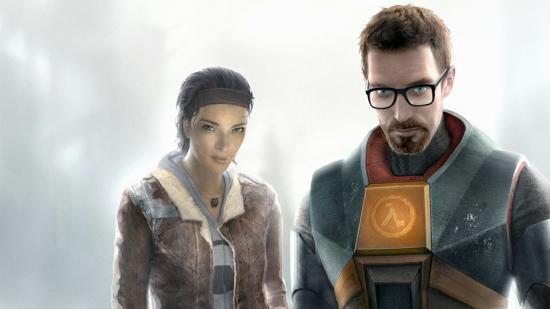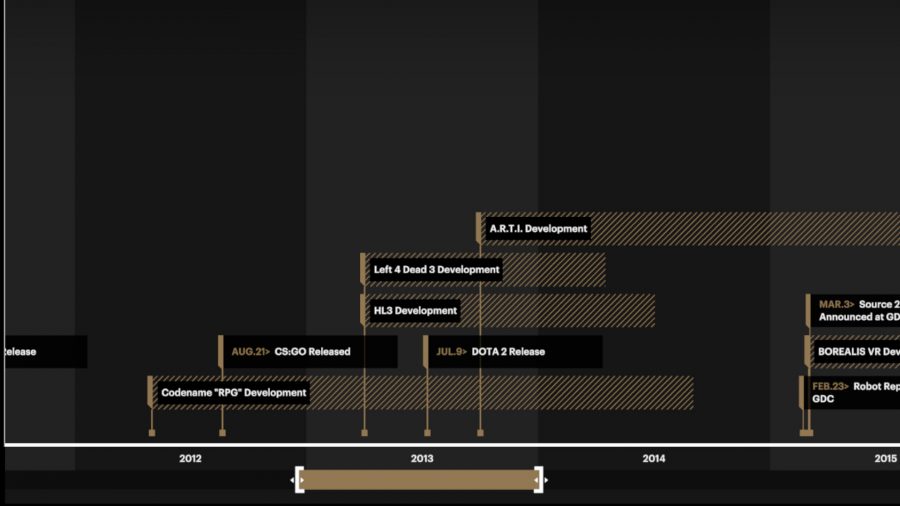Geoff Keighley’s The Final Hours of Half-Life Alyx has launched, and with it, we’ve gotten more insight into Valve’s inner workings than we’ve had in ages. Working with Valve, Keighley has lifted the veil on infamously MIA projects like Half-Life 3 and Left 4 Dead 3, helping us sort out years worth of rumours and reports about what’s been going on inside the studio.
Half-Life Alyx was “at least Valve’s sixth attempt to do something new with the Half-Life property” since Episode Two. That started, of course, with Episode Three, which had entered early production in 2008, but Valve couldn’t figure out how to build something innovative within the confines of the Source engine. Episode Three devs started to move onto Left 4 Dead, and the project slowly evaporated.
“We convinced ourselves we should go work on engine technology before we worked on another Half-Life or another big game,” David Speyrer tells Keighley. Thus, the focus became Source 2. Valve started developing three projects alongside Source 2. One was an RPG “inspired by titles like Monster Hunter, Dark Souls, and even The Elder Scrolls”, but this project never really got off the ground.
The second Source 2 project was Left 4 Dead 3, which was in early development as of 2013 under a team of 30 developers. The game was set in Morocco, and would have featured an open-world and displayed “hundreds of zombies”. But Source 2 wasn’t yet ready for the ambitious project, and this version of L4D3 was shelved after a host of technical issues.
The third was Half-Life 3. Inspired by Left 4 Dead, this vision of Half-Life 3 would’ve been built for replayability, with scripted narrative sequences separated by stretches of procedurally-generated gameplay. A building you had to infiltrate, for example, might have a different entrance and a different set of enemies every time.
Like Left 4 Dead 3, Half-Life 3 stalled because Source 2 just wasn’t ready for it. “It was hard to build a first-person shooter on Source 2 at the time,” Speyrer says. “There was no lighting solution, no save and restore, no visibility solution. A huge amount of tech was needed, and we honestly didn’t get very far.” Plus, Valve’s famously open-ended approach to development meant that teams were often too unfocused to settle on a particular vision for any given game.
Other Half-Life-themed false starts at Valve included Shooter, a VR minigame that was intended for inclusion in The Lab. Shooter was cancelled in part because the weight of expectation would’ve crushed anything set in the Half-Life universe.
Another VR project, codenamed Borealis, would’ve expanded the Half-Life narrative. Under writer Marc Laidlaw, the story would’ve had you aboard the bridge of the Borealis, time-traveling back and forth between two timelines – one set after Episode Two, and the other set during the Seven Hour War, when the Combine invaded Earth. This prototype “never gained much momentum internally.”
Then, of course, we got Half-Life Alyx. This project, though it was of a more limited scope than a proper Half-Life, was intended in part to right the wrongs of Valve’s inconsistent development, and focus the studio on a single, major project.
Incidentally, the VR game was initially set to launch closer to the release of Valve’s Index headset, but playtesters were underwhelmed with the gameplay of the finale.
So, if you’re keeping track at home, Valve’s five cancelled Half-Life projects are Episode Three, Arkane’s Ravenholm, Half-Life 3, the Shooter VR minigame, and Borealis.
“Privately,” Keighley writes, “most of the team hopes that the next big thing will indeed be a full-scale Half-Life game built not for VR, but as a game accessible across all traditional gaming platforms.” Though the devs are still unsure, ultimately, if they’ll be doing something so big in scale next – or, perhaps, they’ll continue to build big new things in VR.
But the door is open once again to more Half-Life games, as the studio has said in numerous interviews following Alyx. And as Phil Co tells Keighley, “The ice has been broken, now we’re hoping to smash through the ice completely. We’re not afraid of Half-Life no more.”
You can head to Steam to pick up The Final Hours of Half-Life Alyx for yourself, at a price of $9.99 / £7.19 / €8.19.

